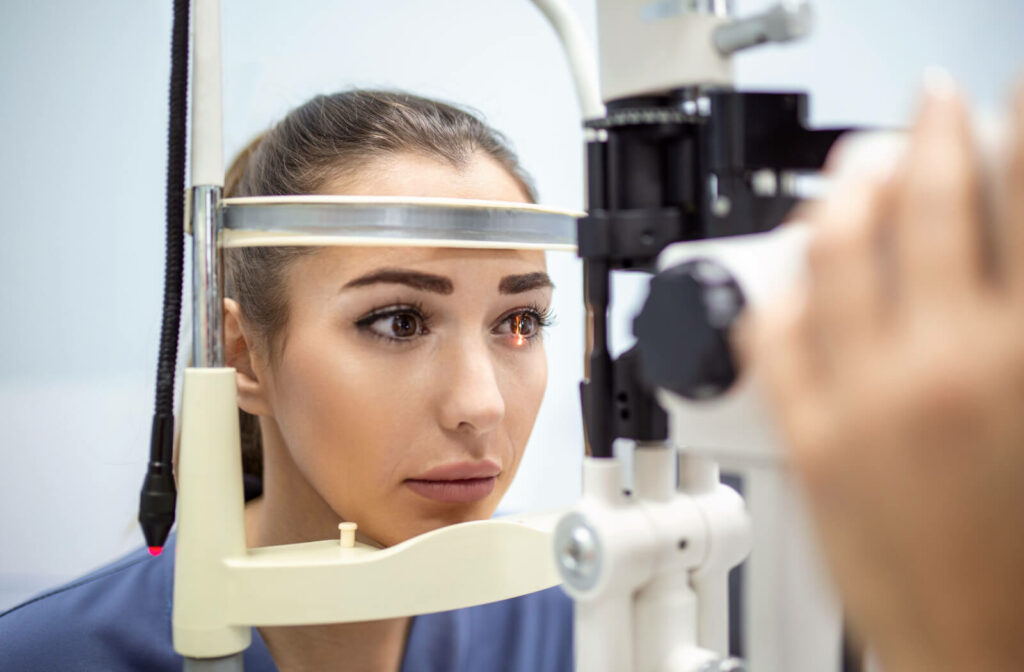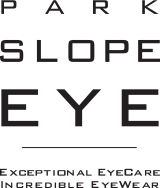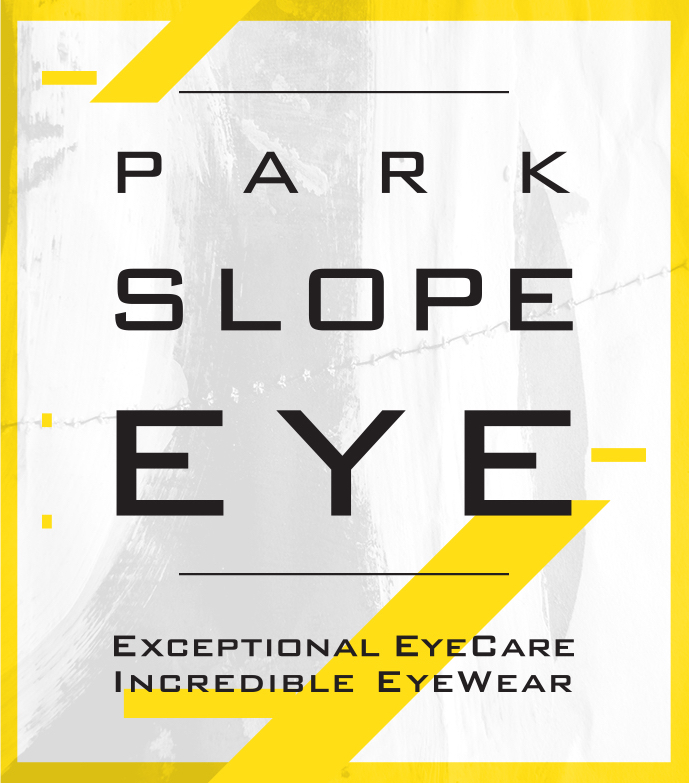Blepharitis is a common eye condition that causes inflammation of the eyelids and can cause dry eyes.
Blepharitis is often caused by a bacterial infection in, on, and around the eyelids, but skin conditions, acne growth, or hygiene can also cause it. No matter the cause, there is good news: blepharitis is highly treatable with the help of a skilled optometrist.
What Is Blepharitis?
Blepharitis is an inflammation of the eye’s oil glands along the eyelids. It can cause symptoms like:
- Foreign body sensation
- Burning or stinging eyes
- Watery eyes
- Itchy eyes
- Sensitivity to light
- Red and swollen eyes or eyelids
- Foamy tears with tiny bubbles
- Crusty eyelids or eyelashes when you wake up
It’s a common contributing factor to dry eye syndrome, an uncomfortable eye condition caused by a problem with the tear film.
Fortunately, blepharitis isn’t contagious and won’t cause long-lasting eye damage, although it can be quite uncomfortable.
What Causes Blepharitis?
Your skin has bacteria all over it; sometimes, these bacteria can spread and grow in hair follicles, including eyelashes. These intruders can irritate the eyelash hair follicles, ultimately resulting in blepharitis. This condition can also be caused by mites or dandruff inflaming the area.
You’re at a higher risk of developing blepharitis if you have:
- Dandruff
- Rosacea
- Oily skin
- Allergies that affect your eyelashes
There are several kinds of blepharitis, so it’s crucial to talk to your eye doctor if you have related symptoms. They can examine the area to determine what type of blepharitis you have and recommend a treatment plan.
Types of Blepharitis
When trying to understand the different types of blepharitis, it can initially seem a little complicated. There are 2 primary types:
- Anterior blepharitis affects the outside front of the eyelid, right where your eyelashes grow.
- Posterior blepharitis affects the inner edge of the eyelid near the eye.
Each type of blepharitis affects the eye differently, and they get further divided into sub-categories depending on your symptoms.
Anterior Blepharitis
There are 2 subtypes of anterior blepharitis:
- Staphylococcal blepharitis is caused by a certain bacterial buildup and causes sticky eyelids and askew eyelashes.
- Seborrheic blepharitis is caused by a skin condition called “seborrheic dermatitis” and causes scale-like flakes around the bottom of the eyelids and the eyelids to become red or pink.
Posterior Blepharitis
There are also 2 subtypes of posterior blepharitis:
- Ulcerative blepharitis is caused by a specific bacteria that causes an ulcer under the eyelashes. It can lead to the loss of your eyelashes, and it often causes brittle crusts to develop around the eyelids.
- Meibomian blepharitis occurs when the oil glands in the eyelids become inflamed and clogged, which can lead to dry eye syndrome. The meibomian glands produce the oils needed to prevent your tears from evaporating too quickly.
Demodex Blepharitis
There are tiny mites that exist on every person’s skin called “Demodex.” They naturally live in your hair follicles and feed on oils and dead skin. Normally, they’re completely harmless—they’re extremely tiny and rarely cause any problems.
But if too many Demodex mites spread to your eyelashes, they can inflame the area. The immune system may have a response and try to flush them out, or the mites themselves cause a bacterial infection by carrying bacteria to the follicles around the eyelids. This can often cause blepharitis to develop as the follicles start to become infected.
Is Blepharitis Treatable?
No matter what type of blepharitis you have, it’s often treatable. However, you’ll need to visit an experienced optometrist for a thorough exam and symptom assessment to determine the cause of your blepharitis and how to approach treatment.
If your condition is caused by a problem with meibomian glands, your optometrist may recommend dry eye therapy. These treatments involve stimulating the area around the meibomian gland to remove blockages while promoting circulation so the body can begin to heal.
If your blepharitis is caused by a skin condition, your optometrist may work closely with a dermatologist or family doctor to provide proper treatment. You may need to take antibiotics to combat the bacterial infection.
Can You Prevent Blepharitis?
You can lower your risk of developing blepharitis by making small lifestyle adjustments. And if you already have this condition, you can manage it and reduce symptoms with these same adjustments:
- Regularly wash your face, especially around the eyes
- Avoid touching or rubbing your eyes, especially when your hands are dirty
- Follow the advice of your doctor, optometrist, and dermatologist
- Remove makeup before going to bed
- Maintain a healthy diet and lifestyle to keep your immune system strong
And remember to visit your optometrist regularly! They’re trained eye care professionals and can recognize the signs of most common eye conditions like blepharitis. Early detection means you can get treatment sooner and help prevent it from worsening.

Where to Get Help for Blepharitis
If you have blepharitis or symptoms of blepharitis, reach out to us at Park Slope Eye. Our team is committed to providing you with comprehensive care, and we’re here to provide treatment for conditions like blepharitis. Book an appointment with us today!









